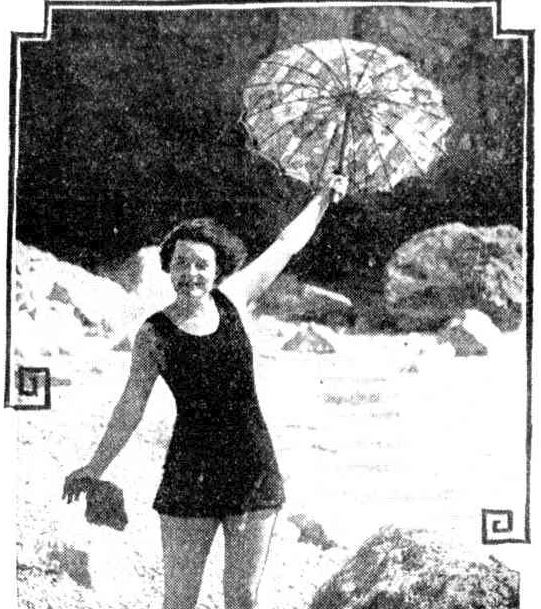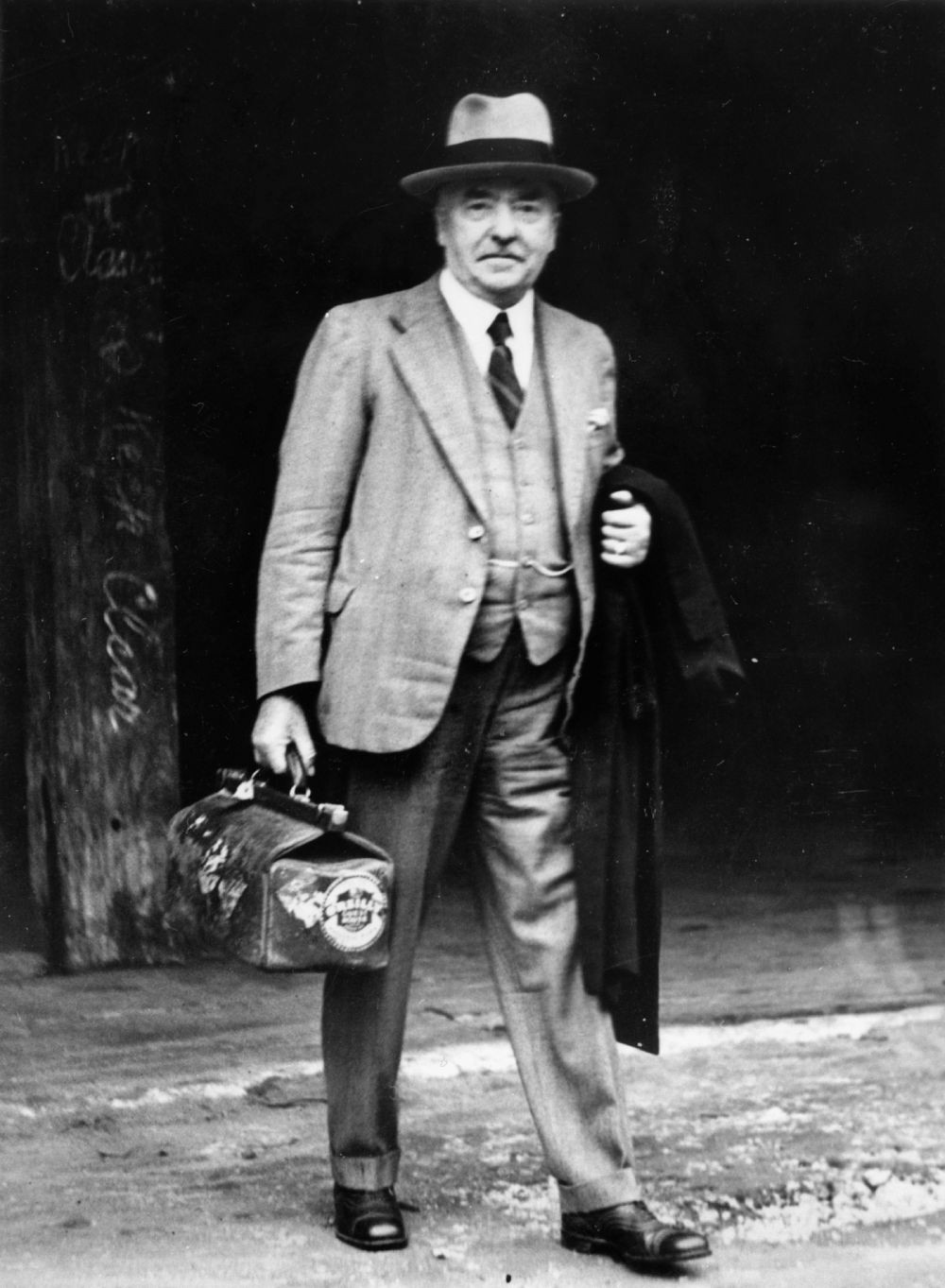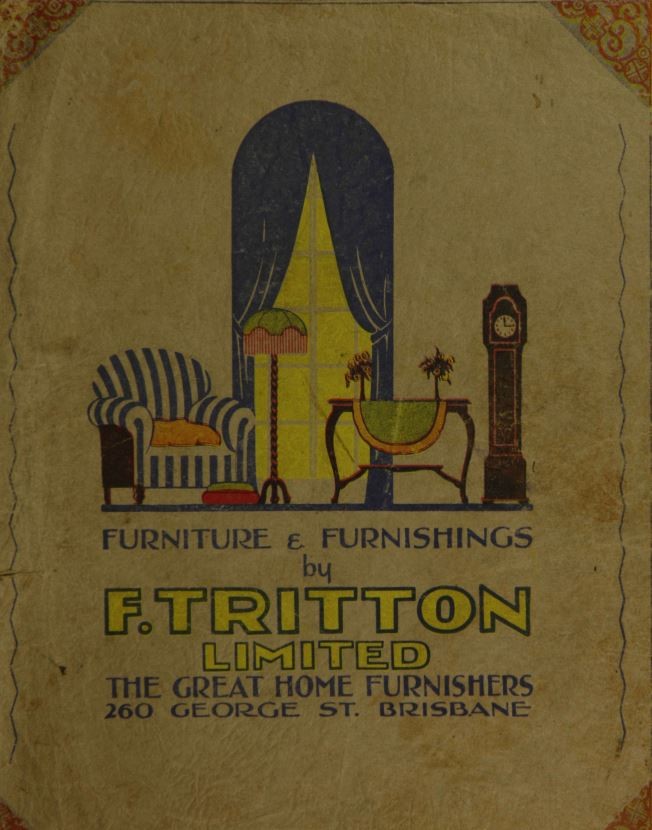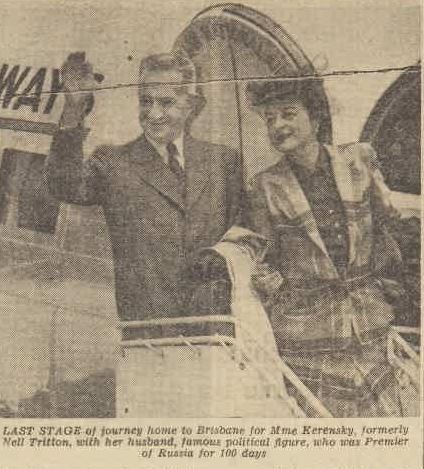Mentioned in passing: the story of Nell Tritton
By Guest blogger: Tony Brett Young, writer | 31 July 2019

Nell Tritton on the beach at Capri, Italy. Photograph published in Sydney's Sunday Times, 16 May 1926, p.21
Some people with long memories may have come across an English novelist of the first half of last century called Francis Brett Young. He was my father’s eldest step brother who, while extremely popular in his time, is now virtually unread. His writing is dated and wordy, and obviously doesn’t appeal to modern readers. Why, then, am I bothering to mention his name? Well, in researching some family history recently I came across an interesting Queensland connection which is worth repeating.
When Francis died in 1954, his widow Jessica Brett Young – a rather formidable woman who had been devoted to her husband and his reputation – wrote a tedious hagiography about him1. One of its many irritating aspects was her tendency to name drop, often in passing without explanation or apparent reason. In re-reading the book for a recent article I had been asked to write, I stumbled across one such example in a curious reference to a young Australian. The name, as I read it, sounded vaguely familiar.
To provide a bit of background, Jessica and Francis had settled on Italy’s Isle of Capri as part of a growing writers’ community – names such as Somerset Maugham, Compton Mackenzie, and D.H. Lawrence. In 1925, the Brett Youngs had been to England for several months, and as winter approached they decided to return to Capri. In her book Jessica records, without explanation, their decision to invite someone to join them: “... we telephoned an amusing young Australian girl who had come to England with literary ambitions, suggesting that she might like to travel with us to Italy. Thérèse Nellé Tritton arrived at the boat train, four days later complete with luggage and delighted at the idea of further adventure.”
Jessica did not elaborate on the circumstances of their friendship, or refer in any detail to Ms Tritton’s stay in Capri, apart from a patronising reference to her Australian accent and her apparent naivety. But as I read the passage the name Tritton certainly rang a bell from my Queensland origins. As it’s so easy to do these days I Googled the name on the internet. I then discovered a story about Ms Tritton that was far more interesting than Jessica seemed to suggest in her disparaging anecdote about her.
Born in Brisbane in 1899, Lydia Ellen Tritton (Nell) was the daughter of a wealthy furniture-maker and retailer, F.W. Tritton. I remember F.W. Tritton in the 1950s and ‘60s as Brisbane’s largest furniture store, in George Street, and their advertisements were carried on the the city’s tram tickets. Nell Tritton2 was educated at Somerville House, the city’s exclusive girls’ school, where she insisted on being called Nellé. As she said she ‘preferred to be hated than ignored’.

Businessman F. Tritton, Brisbane, March 1935. John Oxley Library, State Library of Queensland. Neg 96320

Furniture & furnishings by F. Tritton
Limited. ca.1930 - catalogue. State Library of Queensland collection.
After leaving school, she published privately an anthology of verse,Poems, which supports Jessica’s contention that she may have had literary ambitions. Initially, her home life involved tennis parties, shopping trips and social events. Indeed, during a royal visit to Brisbane in 1920, the attractive 21-year-old was twice asked to dance by the heir to the throne, Edward, Prince of Wales. With her privileged background, she could easily have settled into a comfortable life of wealth and leisure, but she craved adventure and dreamed of living in Europe and marrying a famous man.
Nell was never one to conform, and she developed a passion for car rallying, having persuaded her father’s chauffeur to teach her how to drive. She also insisted on making a career for herself and trained as one of Queensland’s first women journalists, a profession I followed some 40 years later in the same city. In 1925 Nell Tritton sailed for England. It was about this time she must have met the Brett Youngs. In her book Trailblazers,3 Australian historian Susanna de Vries provides a little more detail about Nell’s stay on Capri. She describes how Nell’s dislike of winter and need for the sun persuaded her to rent a holiday villa on Capri overlooking the sea. There she took Italian lessons “and enjoyed mingling with the many artists, writers and musicians…”.
Nell then went to live in Paris, soaking up the language and the culture, while working as a foreign correspondent for Australian outlets, and writing for American magazines. While there she was introduced to the large community of Russians who had been forced to flee their homeland in 1917 after the Bolshevik revolution which deposed Tsar Nicholas II and created the Soviet Union. She developed a deep interest in Russian culture and in December 1928 she married Nicholas Alexander Nadejine, a 43-year-old former officer of the White Russian Army, now seeking a career as a professional singer. He unsuccessfully tried to join the Covent Garden Opera Company, and thereafter he reputedly deceived his wife pursuing ‘some crazy elderly Englishwoman who was rich and idle’. Nicholas and Nell divorced in 1936.
Nell then secured a job as a translator and driver for Alexander Kerensky who had been selected as Russia's first prime minister after the tsar's abdication, but was then ousted by the Communist revolutionary, Vladimir Lenin. Kerensky fled and spent the following decades evading would-be killers acting on the orders of Lenin and his successor Joseph Stalin. Kerensky was also on the Nazis' death list for his denunciation of Hitler. Therefore, as the German tanks edged closer to Paris in June 1940, he and Nell, now married, knew they had to get out of France. As their car joined the convoys inching their way across the country, they drove along roads littered with dead bodies, and on several occasions escaped bullets fired at them by German fighter planes.
Refused entry to Spain because Kerensky was also considered an enemy of General Franco, the couple was forced to make another hazardous journey to the coast, where Nell persuaded the captain of a British ship that her husband had vital information for the UK government. Once safely across the English Channel, the couple decided to continue on to the United States arriving in August 1940 and receiving a triumphal welcome from the New York Times. They lived in a small, rented apartment on Park Avenue until 1942 when they acquired a large wooden farmhouse near the New York-Connecticut border. Kerensky's lecture tours provided their main source of income. Their married life together in their farmhouse was described as idyllic, and numerous guests came to visit them and enjoy games of croquet.
Nell Kerensky sometimes thought of returning to Australia to undertake war-work, but it was not until October 1945 that they travelled to Brisbane. Several months later, while staying with her parents at their Clayfield home, Nell suffered a stroke. She died of chronic nephritis on 10 April 1946, probably the result of exposure as a child to the lead-based paint used on the family’s Brisbane home.

Alexander and Nell Kerensky arrive in Brisbane. Image from Australian Women's Weekly, 1 December 1945, p.18
At the time of his death in New York in 1970, Alexander Kerensky was one of the last surviving major participants in the turbulent times of 1917. Memories of Kerensky’s part in those events endured and no Russian Orthodox church in New York would accept his body for burial, believing him to be largely responsible for Russia falling to the Bolsheviks. His body was finally flown to London where he was buried at Putney Vale’s non-denominational cemetery.
As I followed the story of Nell’s comparatively brief life, I speculated that perhaps Jessica Brett Young might have paid more attention to her young acquaintance – and been more complimentary about her – if she had been able to predict something of Nell’s adventurous life which might well have been the subject of one of Francis’s novels.
Tony Brett Young
1Francis Brett Young, a biography by Jessica Brett Young, Heinemann, 1962.
2Australian Dictionary of Biography: Tritton, Lydia Ellen (Nell) (1899–1946) by Judith Armstrong
3Trailblazers: Caroline Chisholm to Quentin Bryce by Susanna de Vries, 2018
Other sources:
Courier-Mail 23 August 1939
Brisbane Sunday-Mail 24 April 2011
Brisbane Telegraph 10 April 1946
Further readings from Tony Brett Young
Comments
Your email address will not be published.
We welcome relevant, respectful comments.